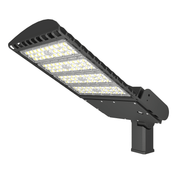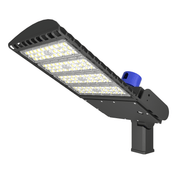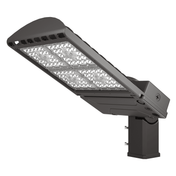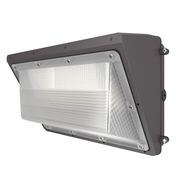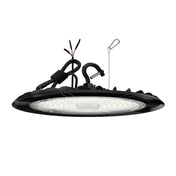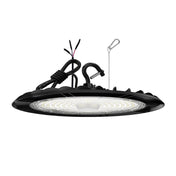Introduction
Whether you're an artist or not, our eyes are sensitive to light quality and color. A red shirt lit directly with midday sunlight looks very different than a red shirt lit under fluorescent bathroom lights. Why, you ask, does this color look so different under different lighting (different in terms of: desaturated, color-shifted, dull, unreal, etc.)?
Light is a dream that has been pursued throughout human history. Since ancient times, humans have faced the fear of the night, so they held up torches to dispel the darkness. With the passage of time and the development of science and technology, human history has gone through the development process of paraffin lamps, electric lamps, fluorescent lamps, halogen lamps, high-pressure sodium lamps, metal halide lamps, and LED lamps. Take street lamps as an example. It used paraffin lamps as a light source in 1417, and it was gradually replaced with the invention of electric lamps in 1879. Entering the 20th century, fluorescent lamps, halogen lamps, high-pressure sodium lamps, and metal halide lamps were developed, and street lamps also began to use such lamps as light sources. Among them, high-pressure sodium lamps are still used in some road lighting, while metal halide lamps are more commonly used in stadium lighting because of their high color rendering index. With the emergence of LED technology in 1969, street lamps, factory lights, floodlights, and stadium lights (see more Hylele sports lights) gradually began to use LED as a light source. In addition to energy saving, LED also has the characteristics of a high color rendering index and good stability. This article mainly explains the color rendering index of LED and corresponding reports, such as LM79, TM-30-18, IEC62717 reports, etc.
What is CRI?
The color rendering index (CRI) is a measure of the ability of a light source to render the true color of an object. In short, the higher the CRI of a light source, the closer the color of the object it illuminates is to the color under an ideal light source or natural light. The International Commission on Illumination (WHO) International Commission on Education? explains color rendering as follows: Color rendering is the property of the color effect produced by a light source on an object compared to the color effect produced by a reference light source (such as natural light) on the object. In theory, the maximum value of the color rendering index CIE Ra is 100, and when the light source is standardized daylight or a black body, the color rendering index is 100. Here we need to distinguish between CRI and CCT. The color rendering index CRI of a light source does not directly indicate what color the light source itself is. The color of the light source itself is related to the correlated color temperature, while the color rendering index is mainly related to the spectrum of the light source. The color rendering index is mainly related to the spectrum of the light source. For example, the spectrum of an incandescent lamp is continuous and contains all the frequencies in the visible spectrum, similar to natural light, so its CRI can be considered to be CRI100. The spectrum wavelength distribution of fluorescent lamps has some wavelengths with high light content, while some wavelengths have almost 0% light content, so the color rendering index of fluorescent lamps is very low. The color rendering index of general LEDs is above 70, and the highest can even reach 90.

How is CRI calculated?
We know that Ra is the arithmetic mean of R1 to R8, so how are R1 to R8 calculated and what do they mean? CIE (International Commission on Illumination) stipulates eight standard color samples from R1 to R8, which have different hues, saturations and brightnesses, and basically cover the range of common colors, namely R1 (red), R2 (dark yellow), R3 (lemon green), R4 (light green), R5 (light blue), R6 (purple red), R7 (red), R8 (yellow-green), R4 (light green), R5 (light blue), R6 (purple red), R7 (light red), R8 (light yellow-green). Professional laboratories use equipment such as spectroradiometers to measure the spectral reflectance or transmittance of 8 standard color samples under the light source to be tested and the reference light source (usually a daylight simulator), and then calculate the triple stimulus values (X, Y, Z) of the color samples under the two light sources. According to the triple stimulus values (X, Y, Z), they are converted into color coordinates (x, y) through a specific formula. The commonly used color coordinate system is the CIE 1931 color coordinate system. The color coordinates (x, y) accurately represent the position of the color on the colorimetric chart. By comparing the difference in color coordinates of the color sample under the light source to be tested and the reference light source, the special color rendering index (Ri) of each color sample is calculated using a specific formula. Generally, the color difference formula recommended by CIE, such as ΔEab (CIELAB color difference formula), is used to calculate the color difference ΔEab of the color sample under the two light sources, and then it is converted into the special color rendering index Ri according to the formula Ri=100-4.6ΔEi*:, where ΔEi*: is the color difference of the i-th color sample under the light source to be tested and the reference light source. The arithmetic average of the special color rendering indexes (R1 to R8) of the 8 standard color samples is the general color rendering index Ra of the light source. Ra ranges from 0 to 100. The closer it is to 100, the closer the color rendering of the light source is to the ideal light source (such as sunlight or blackbody radiation).
What is TM-30?
IES TM-30 is a color rendering evaluation method introduced by the Illuminating Engineering Society (IES) in 2015 to address the limitations of Ra (CRI). The IES TM-30 report provides a more comprehensive and accurate method for evaluating the color rendering performance of light sources, and it describes the ability of light sources to reproduce different colors in more detail than traditional color rendering indices such as Ra. TM-30 uses 99 color samples (much more than CRI's 8 samples), covering a wider range of hues, saturation, and brightness, and is more comprehensive. In 2018, IESNA (IESNA also uses IESNA Light Distribution) updated its TM-30 standard, including adjusting the spectral reflectance calculation function, fine-tuning the Rf calculation formula, and adjusting the color temperature range of the reference light source. Here are some key metrics provided by the TM-30:
Rf (Rendering Fidelity Index): Similar to CRI Ra, it indicates the consistency between the color under the light source and the color under the reference light source, but is calculated based on 99 samples and ranges from 0-100.
Rg (Rendering Saturation Index): Indicates the effect of the light source on the color saturation. Rg=100 means that the saturation is consistent with the reference light source, Rg>100 means that the color is more saturated, and Rg<100 means that the color is lighter.
In addition, the TM30 also provides detailed color vector diagrams and visual data showing the effect of the light source on different color areas. Since the fidelity and saturation indices are calculated based on average values, they can only comprehensively evaluate the average color rendering ability of the light source for various colors, and cannot be used to judge the saturation of specific colors. When the color rendering ability of certain specific colors is needed, the TM-30 system also provides a color vector diagram, which directly displays the color shift and saturation of a specific color under the measured light source in a graphical way. Whether the change is darker or more vivid, it is a great supplement to the fidelity and saturation indices.

How to calculate TM-30?
To obtain TM-30 results, the spectral power distribution (SPD) of the light source needs to be determined first. According to the correlated color temperature (CCT) (What are different light sources?) of the light source to be tested, black body radiation (for warm light sources) or CIE D series light sources (for cold light sources) are selected as the reference light source. Based on the SPD of the light source to be tested and the reference light source, we can calculate their color coordinates and evaluate 99 color evaluation samples (CES) and color gamut area. The 99 color samples are standardized color samples defined by TM-30-18, covering a large range of hues and saturation, and finally, we can get the Rf and Rg values. Rf is the arithmetic mean of 99 Rf,i, where Rf, i = 100- 6.73△Ei is the color rendering index of the i-th color sample, which measures the color reproduction ability of the DUT for the i-th color sample relative to the reference light source. The calculation formula for Rg is Rg=100x test light source color gamut area/reference light source color gamut area, where the color gamut area is the area enclosed by the average chromaticity coordinates (μ′, ν′) of 99 CES.
In addition, the TM-30 report also provides a color vector diagram. The color vector diagram is based on a reference light source (such as a black body radiator or a standard light source). By measuring the color differences between the color samples under the light source to be tested and the corresponding color samples under the reference light source, these differences are plotted as vectors on a specific chromaticity diagram. Each vector has two key attributes, direction and length. The direction represents the direction of the color shift, such as toward red, green, or blue; the length represents the degree of color shift. The longer the length, the greater the color shift, that is, the more obvious the difference between the color sample under the light source to be tested and the color sample under the reference light source. Please see the figure below.

Hylele LED Lighting Solutions
Hylele produces many types of lamps, including street lights, factory lights, high bay lights, flood lights (see more Hylele flood lights), stadium lights, gas station lights, solar street lights. These lights can be equipped with different types of lamp beads, such as 3030, 5050 and 2835.



